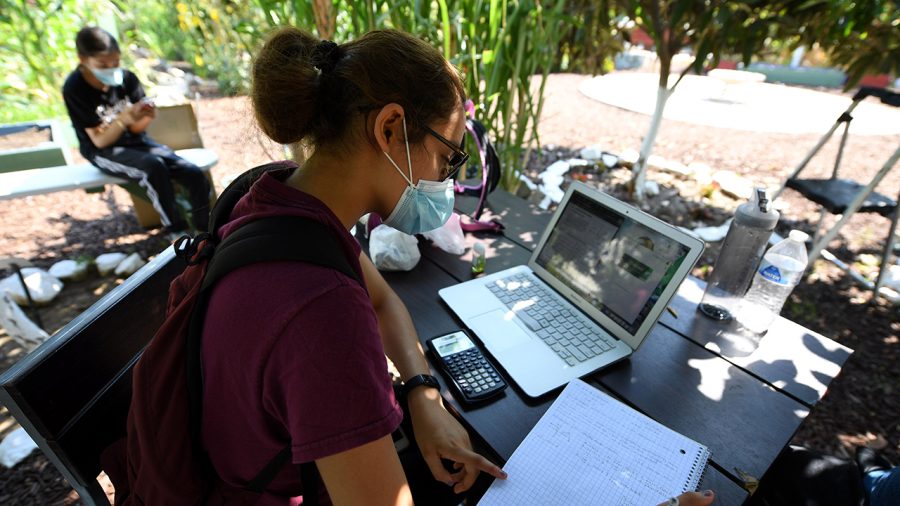Gender Digital Divide: The Unseen Effects on Young Girls
November 18, 2021
In the age of technology, the internet exacerbates a gender divide of digital access, placing girls and gender-expansive youth at a disadvantage for their personal and professional lives.
Alliance for Girls, based in San Francisco, the largest regional alliance of girl-serving organizations serving more than 300,000 girls across six Bay Area counties, conducted surveys to unveil the divide. Sixty-six percent of girls and gender expansive youth identified their stress and anxiety increased during the pandemic, a Uniting Isolated Voices: Girls & Gender Expansive Youth During COVID-19 report found.
“‘Girls’ refers to gender-expansive youth (cis girls, trans girls, non-binary youth, gender non-conforming youth, gender queer youth, and any girl-identified youth),” the organization notes.
Technology was a lifeline for many during the pandemic, whether used for social connection, work, or educational purposes; almost all Americans said the internet was essential to them during the pandemic, a Pew Research survey found.
“Girls who lack reliable internet connectivity are encountering a systemic barrier to fully engaging with their education, healthcare, support networks, and other key aspects of their lives during COVID-19,” said Cynthia Nimmo, Alliance for Girls Interim Executive Director.
Access to the internet became a crucial point of access to find jobs, expand research, engage in education, and other key aspects of life. During the height of the pandemic, students were forced to quarantine at home and transition to remote learning.
In 2016 the UN General Assembly passed a non-binding resolution declaring “internet access as a human right,” yet one in four US households do not have access to the internet.
In the Bay Area, about “one in three (30% of girls) reported being unable to get the learning support that they needed” with “Black and African American girls, girls with previous suspension of school expulsion” twice as likely to report not having regular access to the internet, explained Nimmo.
The lack of internet access impacts girls’ ability to succeed academically, and they experience higher rates of isolation, stress regarding their futures, lack of structure around school and extracurricular activities, loss of motivation, and a loss of access to healthcare, according to Nimmo.
The internet access numbers fluctuate regarding one’s socioeconomic status, race, ethnicity, and gender. For African American and Latino households, only 20% had access to a desktop or laptop, a Public Policy Institute of California study by Niu Gao and Joseph Hayes found. The digital divide issue is “deeply rooted in poverty and disinvestment in communities of color,” said Nimmo.
While broadband access is on the rise for many Californians (84%), about 40% of low-income K-12 students did not have reliable broadband access in Fall 2020, according to Nimmo.
Alliance for Girls calls for redefining schools as “ecosystems for girls’ wellness” with schools that “should invest in building out and advancing physical and virtual services and infrastructure that support girls’ safety, social and emotional wellbeing.”
Half of Americans now say K-12 schools are responsible for providing students with the digital tools needed to complete their schoolwork, including laptops or desktops, Pew Research wrote.
In Oakland, schools provide laptops, tablets, and internet stipends for youth to continue with school remotely but did not account for households with multiple users that require additional bandwidth, a commonality among Bay Area families, the report found.
Broadband internet costs, added Nimmo, need to be “subsidized so that access is available for all families no matter their income, racial background, geography, [and] family size.”
The Alliance for Girls supports affordable and accessible broadband access for all California residents that are not reliant on the user to pay when internet access is required for students and people to participate in the workforce, access resources, and get an education.

















